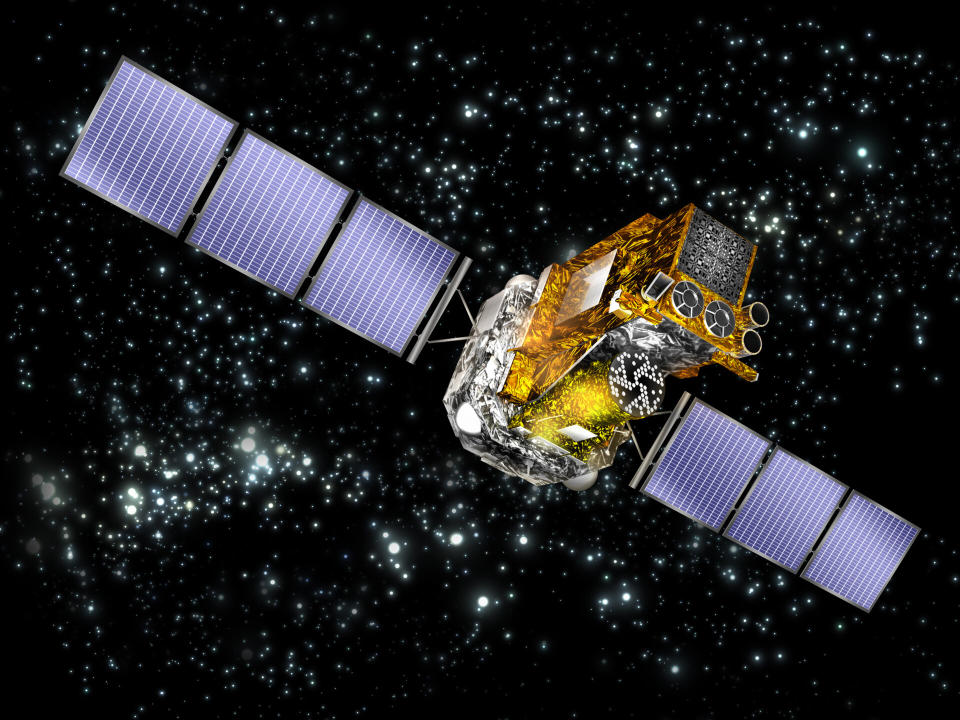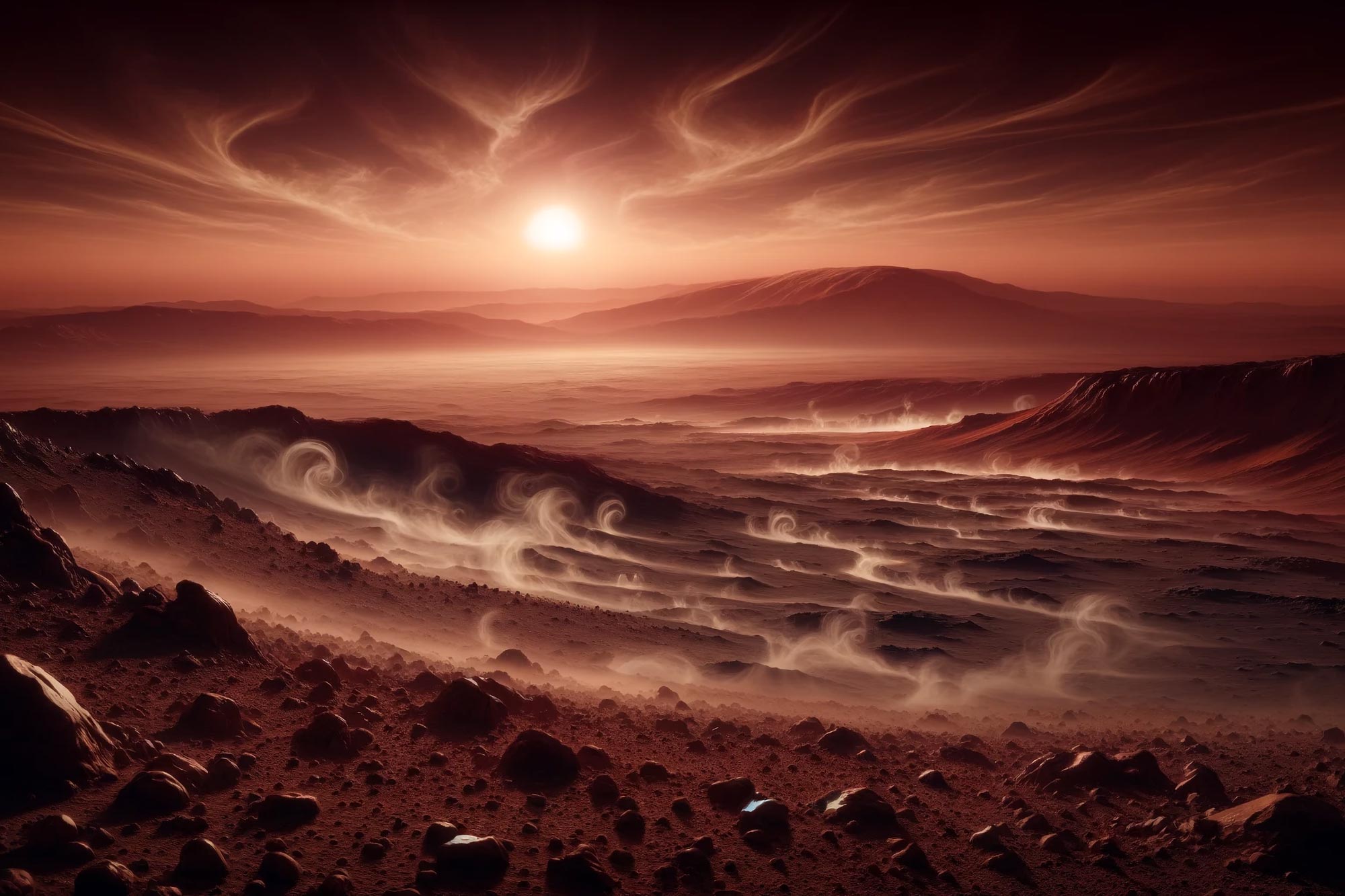A neutron star is the remains of a massive star that once died in a supernova explosion. As a whole, neutron stars are considered some of the most extreme objects in the known universe — and that’s especially true when these incredibly dense star remnants exist alongside companion stars (that haven’t yet “died”) close enough for a neutron star’s immense gravity to strip away material from that second star. In other words, the companion star is like the neutron star’s stellar victim.
These “vampire neutron stars” are special because they spring back to life like a cosmic Bela Lugosi. This is because a companion star’s infalling material triggers thermonuclear explosions at the neutron star’s surface. Some of this stolen matter is channeled toward the poles of the neutron star, from where it erupts at near-light speeds in the form of powerful astrophysical jets. Yet quite what causes these jets to be launched — and how they connect to these thermonuclear bursts — has remained a mystery.
New research, however, has offered a lead in the puzzle.
Scientists have revealed one way to measure the speeds of those jets and connect the values to the qualities of both a neutron star and the unfortunate binary companion star it feasts on. This could ultimately help resolve this jet-related dilemma, and perhaps offer information about other objects that strip matter from a companion star too, such as supermassive black holes.
Related: James Webb Space Telescope finds neutron star mergers forge gold in the cosmos: ‘It was thrilling’
“For the first time, we have been able to measure the speeds of the steady jets that are launched from a neutron star,” lead author and National Institute for Astrophysics (INAF) scientist Thomas Russell told Space.com. “These jets, like those from accreting black holes, are an incredibly important in our universe, as they impart huge amounts of energy into their surroundings, affecting star formation, galaxy growth, and even how galaxies cluster together. But we don’t really understand how these jets are launched.”
Russell explained that, previously, scientists had thought the jets could be launched either due to the rotation of material stripped from a victim star as that material spirals in. There was also the theory that the jets are connected to the spin of the rotating object itself.
This new research could help pin down an answer about which mechanism is predominantly responsible.
“Our discovery of a connection between the thermonuclear explosions and the jets now offers us an easily accessible and repeatable probe to disentangle the launching mechanism of the jets in neutron stars,” Russell continued. “As we think jets are launched in very similar ways for all types of objects, this will help us understand how the jets are launched from all objects, even the supermassive black holes that reside at the centers of galaxies.”
How do neutron stars blow their top?
To reach their conclusion, Russell and colleagues examined two systems containing feeding neutron stars: The X-ray binaries 4U 1728-34 and 4U 1636-536. Both systems are known to periodically erupt with thermonuclear bursts.
Thermonuclear explosions on the surfaces of neutron stars are not a new phenomenon for scientists. These explosions have been analyzed for years, and Russell points out that astronomers have observed at least 125 “bursting” neutron stars in total.
“As the neutron star consumes matter from a nearby star, the accreted material builds up on the surface of the neutron star,” Russell said “At some point, the pressure becomes too great, and an unstable, runaway thermonuclear explosion occurs that spreads across the whole surface of the neutron star in a matter of seconds.”
Bursts associated with 4U 1728-34 and 4U 1636-536 are visible in the X-ray band, meaning the team was able to use the European Space Agency’s International Gamma-Ray Astrophysics Laboratory (INTEGRAL) space telescope to detect them.
“We found that these explosions cause some extra material to be pumped into the jets for the tens of seconds that the bursts last,” Russell continued. “Using radio telescopes to monitor the jets with the Australia Telescope Compact Array, we were able to track this extra material as it flowed down the jets, basically providing us with a cosmic speed camera to measure the jet speed.”

What they wanted to see were changes in radio emissions following the X-ray bursts.
Indeed, the team detected increases in radio brightness within minutes of each single thermonuclear explosion. This led the researchers to conclude that the evolution of jets is closely related to thermonuclear explosions.
“We were surprised at how clear the response was in the jets. These were very bright and clear flares flowing down the jet that were easily detectable,” Russell said. “We did expect some response but thought it would be much more subtle.”
Neutron star jets caught speeding
The speeds of these jets was the missing piece of the puzzle, the team says, which led to a link between the jets’ violent ejections and explosive feeding events.
“The speed is incredibly important to understanding how the jets are launched, and this new discovery opens a very accessible window to answer that question,” Russell said. “We can now apply this experiment to many other bursting neutron stars, and we can then compare how the jet speed correlates with the spin, mass, and possibly even magnetic field of the neutron star, all of which are thought to be key ingredients to jet launching.”
Should the team see a correlation between one of those properties and the jet speed, it will reveal what the main launching mechanism for these jets is — be it the spin of the neutron star or the rotation of the infalling material.
This is the first time the speed of such a jet from a neutron star has been measured, but it’s worth noting that it has been measured before for black holes. However, Russell explained that neutron stars have a massive advantage over black holes when it comes to using them as a probe to investigate jet-launching mechanisms.
“Neutron stars can have very precisely measured spins, well-determined masses, and possibly even known magnetic field strengths, all of which are much harder to measure in black holes,” he said. “So it is only with neutron stars that we can, currently, begin to connect the system properties with the jets.”
RELATED STORIES:
— A new approach might help scientists see inside a neutron star
— Dead star ‘glitches’ could reveal the origins of fast radio bursts
— The heaviest neutron star ever observed is shredding its companion
All in all, the team has now seen this result in two feeding neutron star systems, but these are the only two they have looked at so far.
“We are applying our new technique to as many other bursting neutron stars as we can to reveal how the jet speeds vary with different neutron star properties,” he concluded. “Once we have built a sufficient sample, we will then be able to disentangle the key properties for jet production, revealing how the jets are launched.”
The team’s research was published on Wednesday (March 27) in the journal Nature.

Dr. Sarah Adams is a scientist and science communicator who makes complex topics accessible to all. Her articles explore breakthroughs in various scientific disciplines, from space exploration to cutting-edge research.






:max_bytes(150000):strip_icc()/1-Herb-for-Brain-Health-According-to-a-Dietitian-8dc78ddf64804179b2f4fece2f4c6576.jpg)

